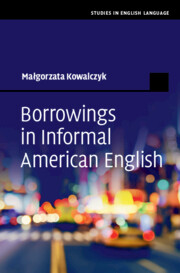71 results
10 - Describing and Taxonomising the Phenomena of a Glorious Past
-
-
- Book:
- The Discourse of History
- Published online:
- 16 May 2024
- Print publication:
- 23 May 2024, pp 235-270
-
- Chapter
- Export citation
A new ring nematode, Xenocriconemella costaricense sp. nov., (Nematoda: Criconematidae) from Costa Rica
-
- Journal:
- Journal of Helminthology / Volume 98 / 2024
- Published online by Cambridge University Press:
- 10 May 2024, e39
-
- Article
-
- You have access
- Open access
- HTML
- Export citation
3 - Informed Subject Matter
-
- Book:
- Intangible Intangibles
- Published online:
- 25 April 2024
- Print publication:
- 09 May 2024, pp 44-76
-
- Chapter
-
- You have access
- Open access
- HTML
- Export citation
Two new species of the genus Sectonema Thorne, 1930 (Nematoda, Dorylaimida, Aporcelaimidae) from Iran, with new insights into its evolutionary relationships
-
- Journal:
- Journal of Helminthology / Volume 98 / 2024
- Published online by Cambridge University Press:
- 15 April 2024, e32
-
- Article
-
- You have access
- Open access
- HTML
- Export citation
Gymnocranius indicus, a new large-eye seabream from the Indian Ocean
-
- Journal:
- Journal of the Marine Biological Association of the United Kingdom / Volume 104 / 2024
- Published online by Cambridge University Press:
- 04 April 2024, e38
-
- Article
- Export citation
A new species of the genus Hexamermis Steiner, 1924 (Nematoda: Mermithidae) from northern Iran: a nematode with an unusual uterine morphology
-
- Journal:
- Journal of Helminthology / Volume 98 / 2024
- Published online by Cambridge University Press:
- 03 April 2024, e29
-
- Article
- Export citation
10 - First Generation of American Humboldtians of the Early Nineteenth Century
- from Part IV - Wilhelm von Humboldt’s Impact on Americanist Linguistics and Anthropology
-
- Book:
- Wilhelm von Humboldt and Early American Linguistics
- Published online:
- 11 January 2024
- Print publication:
- 01 February 2024, pp 195-222
-
- Chapter
- Export citation
8 - Pragmatics and Emotion
-
- Book:
- Pragmatics and Emotion
- Published online:
- 13 December 2023
- Print publication:
- 21 December 2023, pp 144-148
-
- Chapter
- Export citation
2 - Pragmatics and Emotion
-
- Book:
- Pragmatics and Emotion
- Published online:
- 13 December 2023
- Print publication:
- 21 December 2023, pp 13-28
-
- Chapter
- Export citation
Integrative taxonomy of Serrasentis gibsoni n. sp. (Acanthocephala: Isthmosacanthidae) from flatfishes in the Gulf of Mexico
-
- Journal:
- Journal of Helminthology / Volume 97 / 2023
- Published online by Cambridge University Press:
- 11 December 2023, e96
-
- Article
- Export citation
12 - Travels in Greece
- from III - Heidegger and Literary Works
-
-
- Book:
- Heidegger and Literary Studies
- Published online:
- 09 November 2023
- Print publication:
- 23 November 2023, pp 319-335
-
- Chapter
- Export citation
Visual (data) observation in International Relations: Attentiveness, close description, and the politics of seeing differently
-
- Journal:
- Review of International Studies , First View
- Published online by Cambridge University Press:
- 12 October 2023, pp. 1-22
-
- Article
-
- You have access
- Open access
- HTML
- Export citation
Chapter 1 - Foundations
-
- Book:
- Borrowings in Informal American English
- Published online:
- 31 August 2023
- Print publication:
- 14 September 2023, pp 5-21
-
- Chapter
- Export citation
Steinernema shori n. sp., a new entomopathogenic nematode (Nematoda: Steinernematidae) from India
-
- Journal:
- Journal of Helminthology / Volume 97 / 2023
- Published online by Cambridge University Press:
- 08 September 2023, e72
-
- Article
- Export citation

Borrowings in Informal American English
-
- Published online:
- 31 August 2023
- Print publication:
- 14 September 2023
5 - Eventful Analysis
- from Part II - How to Use History to Describe Patterns
-
- Book:
- The Grammar of Time
- Published online:
- 11 May 2023
- Print publication:
- 25 May 2023, pp 73-93
-
- Chapter
- Export citation
10 - Modern Languages: Exploring Pluriliteracies through a Deeper Learning Episode in French Literature with Younger Beginner Learners
- from Part II - Deeper Learning Episodes: First Steps towards Transforming Classrooms
-
-
- Book:
- A Deeper Learning Companion for CLIL
- Published online:
- 04 February 2023
- Print publication:
- 23 February 2023, pp 184-214
-
- Chapter
- Export citation
Morphological and molecular characterization of Metaxonchium magnum sp. n. from Iran (Nematoda, Dorylaimida, Belondiridae), with new insights into the phylogeny of the genus
-
- Journal:
- Journal of Helminthology / Volume 97 / 2023
- Published online by Cambridge University Press:
- 31 January 2023, e14
-
- Article
-
- You have access
- Open access
- HTML
- Export citation
Post Traumatic Stress Disorder : Clinical description of 101 children
-
- Journal:
- European Psychiatry / Volume 65 / Issue S1 / June 2022
- Published online by Cambridge University Press:
- 01 September 2022, p. S418
-
- Article
-
- You have access
- Open access
- Export citation
4 - Virtue Ethics and Global Governance
-
- Book:
- Virtue in Global Governance
- Published online:
- 28 July 2022
- Print publication:
- 11 August 2022, pp 85-123
-
- Chapter
- Export citation



